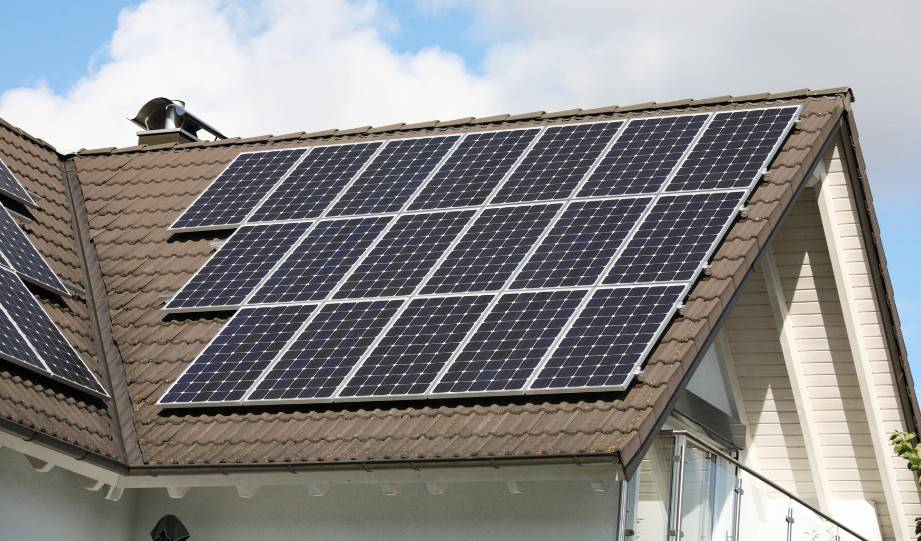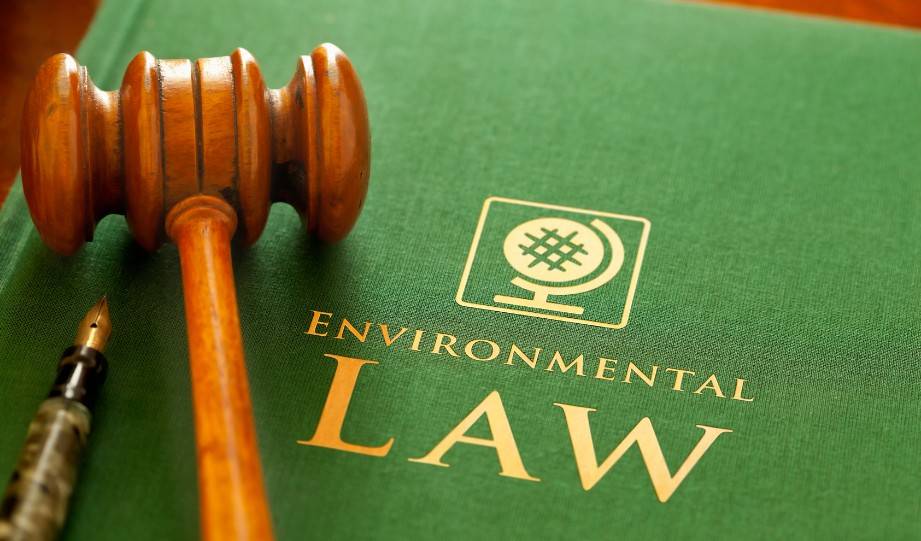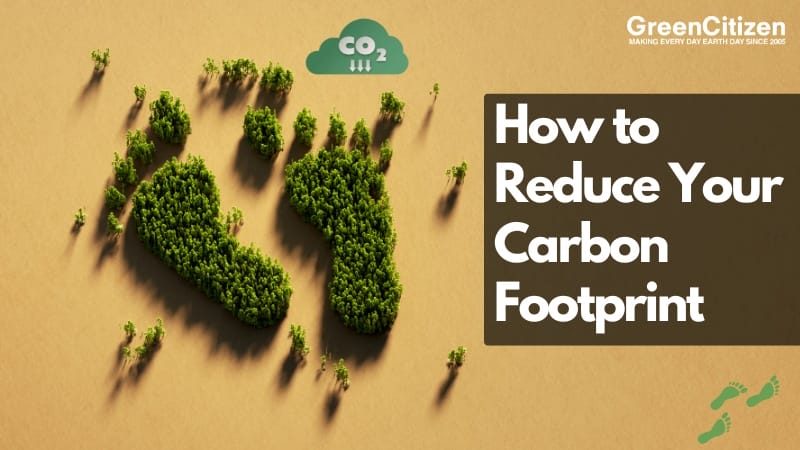The average person today produces 11 times more carbon emissions than someone in 1961. If you are wondering how to reduce your carbon footprint, the answer starts with the choices you make every day.
Your carbon footprint is the total climate impact of your energy use, travel, food, and the things you buy. By switching to cleaner energy, driving and flying less, wasting less, and eating more plant based meals, you can cut tons of CO₂ over your lifetime.
This guide breaks down 21 practical ways to reduce your carbon footprint, one area of life at a time. You will find clear tips for lowering emissions from home energy, transportation, food, products, waste, and even your vote and donations, so you can take climate action that actually fits your real life.
Key Takeaway: How to Reduce Your Carbon Footprint
To reduce your carbon footprint, adopt low-impact habits like using clean energy, eating less meat, recycling properly, driving less, and supporting green policies. Small, consistent actions—at home, in your community, and through conscious consumption—can significantly lower your emissions and contribute to a healthier, more sustainable planet.
1. How Can You Reduce Energy Use at Home and Work?

From keeping the lights on to running your washing machine, electricity consumption adds up quickly—both at home and on the job.
Start by switching from power-hungry appliances to modern energy-efficient models. For instance, clothes dryers are among the most electricity-intensive devices in American homes. Air-drying your laundry can significantly lower your carbon footprint and utility bill.
Old refrigerators, AC units, and incandescent bulbs also drain energy. Upgrading to Energy Star appliances and LED lighting are easy energy-saving tips that make a big difference.
Small changes in energy use lead to lower emissions and lower bills—an easy win for both the planet and your wallet.
2. How to Switch to Renewable Energy and Cut Your Carbon Emissions

Over 80% of the electricity used in the U.S. still comes from fossil fuels, a major source of greenhouse gas emissions. Switching to renewable energy sources is one of the most impactful ways to reduce your carbon footprint.
The easiest option for homeowners is solar panel installation. With federal tax credits, the average cost ranges from $11,000 to $15,000, and just 16 panels can power a typical home.
If rooftop solar isn’t feasible, you can still support clean energy by enrolling in a renewable electricity program through your utility provider or a community solar initiative.
Each kilowatt-hour of renewable electricity you use helps phase out fossil fuels—and brings us one step closer to a sustainable future.
3. How Can Green Technology Help You Lower Your Carbon Footprint?
Green technology refers to tools and innovations that reduce energy use, support sustainable living, and lower greenhouse gas emissions.
At home or in the office, smart thermostats, motion-sensor LED lights, and app-controlled systems can significantly cut electricity consumption. These technologies help avoid energy waste by automating usage based on your habits.
Upgrading to smart home systems also makes it easier to monitor and manage your environmental impact over time. Even small changes—like switching to LED lighting—can reduce emissions and your energy bills.
Investing in energy-efficient technology is more than a modern convenience. It’s a proactive way to shrink your carbon footprint while boosting comfort and savings.
4. How Does Driving Less Help Reduce Your Carbon Footprint?

The average gas-powered car in the U.S. emits about 4.6 metric tons of carbon dioxide every year. That makes personal transportation one of the largest sources of carbon emissions for individuals.
To reduce your footprint, choose low-carbon transportation options like walking, biking, or using public transit whenever possible. Even switching to carpooling just a few days a week can make a measurable difference.
In spread-out areas where driving is necessary, consider combining trips or switching to a fuel-efficient or electric vehicle to lower your impact.
Every mile you don’t drive means fewer emissions in the atmosphere—and a smaller environmental footprint.
5. How Can Flying Less Reduce Your Carbon Footprint?

Air travel accounts for around 12% of all transportation-related CO₂ emissions, making it one of the most carbon-intensive activities for individuals and businesses.
To cut your footprint, fly only when necessary. Consider trains or buses for shorter trips—they emit far less greenhouse gas per mile. For international business, choose virtual meetings via Zoom or Skype instead of flying.
If you must travel by air, avoid private jets and opt for commercial flights, ideally in economy class. Fewer flights and smaller planes mean fewer emissions.
Want to see your impact? Use a carbon footprint calculator to track your aviation emissions and explore carbon offset options.
6. How Does Saving Water Help Reduce Your Carbon Footprint?
Heating water requires energy, and that energy often comes from fossil fuels. So using less water—especially hot water—helps reduce both your carbon emissions and your utility bill.
Here are simple water-saving habits that also shrink your environmental footprint:
- Turn off the tap while brushing your teeth or shaving.
- Take shorter showers or fill your bathtub halfway.
- Fix leaky faucets and pipes.
- Run your dishwasher and washing machine only when full.
- Water your lawn only when needed, not on a fixed schedule.
Conserving water is a smart, low-effort way to support sustainable living and reduce emissions at the same time.
7. How Does Reducing Food Waste Lower Your Carbon Footprint?
Food waste contributes to climate change by releasing methane, a potent greenhouse gas, as it decomposes in landfills. Reducing what you throw away is a simple way to lower your carbon footprint.
Here are a few ways to waste less food:
- Buy only what you need by shopping in smaller amounts more often.
- Store fruits, vegetables, and perishables properly to keep them fresh longer.
- Repurpose or refrigerate leftover meals instead of tossing them.
Small changes in how you shop, store, and eat food can drastically cut your environmental impact—and your grocery bill too.
8. How Does Eating Less Meat Help the Environment and Reduce Your Carbon Footprint?

Livestock farming accounts for up to 14% of greenhouse gas emissions in the U.S., largely due to methane from cows and other ruminant animals.
According to Project Drawdown, if cattle were a country, they’d rank as the third-largest emitter of greenhouse gases globally. That’s why reducing meat consumption is one of the most effective ways to cut your carbon footprint.
You don’t need to go fully vegetarian or vegan overnight. Try a flexitarian diet—mostly plant-based, with the occasional meat or fish. It’s a simple shift that supports a healthier planet and a healthier you.
9. How Can a Minimalist Lifestyle Reduce Your Carbon Footprint?
Every product you buy has a carbon cost—from raw materials and packaging to shipping and disposal. Adopting a minimalist lifestyle reduces your environmental impact by lowering demand for high-emission goods.
To start, buy only what you truly need, and choose digital or secondhand options whenever possible. Rent movies instead of buying DVDs. Borrow books or use e-readers. Skip fast fashion and impulse purchases.
Minimalism supports sustainable living, cuts down on waste and overconsumption, and helps you save time, money, and emissions.
10. How Can Proper Recycling Reduce Waste and Your Carbon Footprint?

When items go to landfills, they break down and release methane—a powerful greenhouse gas. In fact, U.S. landfills emitted over 129 million metric tons of methane in 2010 alone.
To avoid contributing to landfill emissions, follow proper recycling practices. Recycle items like plastic bottles, cardboard, and e-waste according to your local recycling guidelines.
For hard-to-recycle materials—like VHS tapes, Styrofoam, or electronics—visit a certified recycler like GreenCitizen. Responsible waste management keeps recyclable materials in circulation and cuts down your carbon footprint at the same time.
11. How Does Reusing and Upcycling Help the Environment?
Every item you reuse keeps waste out of landfills—especially non-recyclable products that would otherwise release methane as they decompose. By embracing reusing and upcycling, you reduce waste, conserve resources, and lower your carbon footprint.
For example, turn an old bedsheet into a projector screen or kids’ play tent. Repurpose glass bottles as lamps, books as floating shelves, or even vintage suitcases as bathroom cabinets.
Creative reuse ideas give your belongings a second life and help build a more sustainable, low-waste lifestyle—no craft skills required.
12. How Does Buying Local and Organic Food Reduce Your Carbon Footprint?

Food grown far from home travels hundreds or even thousands of miles, increasing its carbon footprint through fuel use and refrigeration. By choosing locally-sourced food, you help cut down on transportation emissions, also known as food miles.
Buying organic produce reduces emissions further by avoiding synthetic fertilizers and chemicals often used in industrial farming.
Visit local farmers markets or dine at green-certified restaurants when possible. Supporting local food systems not only reduces greenhouse gases—it also boosts your community’s economy and promotes sustainable eating habits.
14. What Are Eco-Friendly Products and How Do They Reduce Your Carbon Footprint?
Everyday products—from detergents to dish soap—can contribute to your carbon footprint through toxic ingredients, plastic packaging, and energy-intensive manufacturing.
Switching to eco-friendly alternatives helps reduce emissions, limit waste, and avoid harmful chemicals. Start with green cleaning products from trusted brands like Seventh Generation, ECOS, Molly’s Suds, or Mrs. Meyer’s.
For a wider selection of environmentally responsible products, explore curated options in our own Green Store. Small swaps in your household purchases can lead to big gains in sustainability.
15. How Does Supporting Green Businesses Help Reduce Your Carbon Footprint?

Every purchase you make sends a message. By supporting eco-conscious companies, you help drive demand for sustainable business practices and lower-carbon supply chains.
Brands like IKEA, Toms, LUSH, Beyond Meat, and Seventh Generation are reducing their carbon emissions through renewable energy, fuel-efficient logistics, and carbon offset programs like reforestation and methane capture.
Look for companies that prioritize sustainable packaging, local sourcing, or energy-efficient operations. Choosing these brands helps reduce your indirect carbon footprint—and supports a greener economy.
16. Why Is Climate Change Education Important for Reducing Your Carbon Footprint?
Understanding climate change and your own carbon footprint is the first step toward lasting environmental action. Countries like Sweden and Denmark lead the way in climate policy—not just because of regulations, but because of strong climate literacy among their citizens.
Explore resources like the GreenCitizen blog, our Green Directory recycling database, or scientific publications to deepen your knowledge. Learn about carbon emissions, energy efficiency, and how your daily habits affect the environment.
The more informed we are, the better equipped we are to build an eco-conscious lifestyle and inspire others to do the same.
17. Why You Should Understand Environmental Laws to Reduce Your Carbon Footprint

Environmental laws shape how we manage waste, energy, and pollution—all of which affect your carbon footprint. Knowing these policies helps you stay in compliance and make more informed, sustainable choices.
In the U.S., key laws include:
- SB20/Electronic Waste Recycling Act – governs disposal of hazardous materials in electronics
- Clean Air Act – limits air pollution and greenhouse gas emissions
- Resource Conservation and Recovery Act (RCRA) – oversees waste management
- Federal Insecticide, Fungicide, and Rodenticide Act (FIFRA) – regulates toxic chemicals in agriculture
Visit the EPA website to explore summaries and updates. Staying informed helps you advocate for better policies and hold businesses—and yourself—to higher environmental standards.
18. How Supporting Environmental Nonprofits Helps Fight Climate Change
Donating to environmental nonprofits is one of the simplest ways to reduce your carbon footprint indirectly. These organizations tackle climate change through policy reform, habitat conservation, reforestation, public education, and clean energy advocacy.
Well-known nonprofits include:
- One Percent for the Planet
- Environmental Defense Fund (EDF)
- Conservation International
- World Wildlife Fund (WWF)
- Rainforest Alliance
- Sierra Club
- World Resources Institute
- Rocky Mountain Institute
By supporting these groups, you help fund global climate action and amplify collective impact—especially if you’re unable to make large personal changes.
19. How Can You Promote Eco-Friendly Practices in Your Community?
Community-level sustainability plays a big role in fighting climate change. Look to cities like Copenhagen, which plans to be carbon neutral by 2025, where electric buses, green roofs, and cycling culture lead the way.
Even if the U.S. is behind in some areas, you can spark change locally. Join a community garden, support bike-share programs, or volunteer for local cleanup projects.
Encouraging green initiatives—like composting, tree planting, or neighborhood recycling drives—helps foster an eco-conscious culture that multiplies your individual impact.
20. How Can Voting Help Fight Climate Change?

Your vote is one of the most powerful tools you have to reduce carbon emissions—indirectly but significantly. Support candidates who champion climate action, invest in renewable energy, and commit to reducing greenhouse gas emissions.
Before each election, check candidate websites and trusted voter guides for their stance on climate policies, clean energy, and environmental justice.
But don’t stop at the ballot box—advocate for green legislation, write to your representatives, and encourage others in your community to vote with the planet in mind.
21. What Are Carbon Offsets and How Do They Reduce Your Carbon Footprint?
Carbon offsets let you balance out your emissions by funding sustainability projects that remove or prevent the release of greenhouse gases. Companies like TerraPass offer offset programs for both individuals and businesses.
Offset projects include:
- Reforestation and tree planting
- Methane capture at landfills and farms
- Renewable energy production from organic waste
While reducing your emissions directly is ideal, buying carbon offsets is a great way to neutralize the rest—especially for travel, shipping, or energy use you can’t avoid.
Take Charge of Your Carbon Footprint — One Action at a Time
Reducing your carbon footprint isn’t about doing everything perfectly. It’s about making intentional, sustainable choices—at home, at work, and in your community.
Whether you switch to clean energy, eat more plant-based meals, or support environmental nonprofits, each action helps fight climate change and protect our planet’s future.
Start with what’s doable, share what you learn, and inspire others to join the movement toward a low-carbon, eco-conscious lifestyle. Every step matters—and so does your impact.

